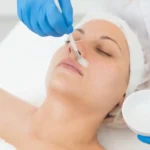THE WHAT? L’Oréal Singapore has joined forces with Nanyang Technological University (NTU Singapore) to open a new joint laboratory to conduct research on the community of bacteria, fungi, and viruses (also called the microbiome) that live on our skin and scalp.
THE DETAILS Hosted by the Singapore Centre for Environmental Life Sciences Engineering (SCELSE), a leading biofilm and microbiome Research Centre of Excellence, the partnership will see around 20 researchers from SCELSE and L’Oréal work together in the joint laboratory.
The lab, located at the NTU Smart Campus, will be headed up by NTU Associate Professor Scott Rice, Deputy Director of the Biofilm Biology cluster at SCELSE, and Dr. Tarun Chopra, Director, Advanced Research, L’Oréal Singapore.
The collaboration evolves a standing relationship between L’Oréal Singapore and SCELSE, with the partners having already patented new technologies.
THE WHY? Working together, researchers will look into ‘possible applications of microbes for cosmetics and dermatology.’
Dr. Mark Phong, Asia Director for L’Oréal’s Advanced Research Labs, said: “We are looking forward to working with SCELSE to further explore the area of skin and scalp microbiomes, to fuel future innovations for our consumers.”’
Aesthetic medicine products are developed and regulated to meet stringent safety and efficacy standards. They are typically administered by trained healthcare professionals such as dermatologists, plastic surgeons, and specialized nurses in clinical settings. These products aim to provide effective solutions for cosmetic enhancement, skin rejuvenation, and overall aesthetic improvement, contributing to both physical appearance and self-confidence.
Key categories of aesthetic medicine products include:
-
Injectables: This category includes products such as dermal fillers, botulinum toxins (e.g., Botox), and collagen stimulators. These injectables are used to smooth wrinkles, add volume, and improve facial contours.
-
Skin Rejuvenation Treatments: Products like chemical peels, microdermabrasion systems, and laser devices are used to improve skin texture, reduce pigmentation irregularities, and enhance overall skin tone.
-
Skincare Products: These include medical-grade cleansers, moisturizers, serums, and topical treatments containing active ingredients like retinoids, antioxidants, and growth factors. They are formulated to address specific skin concerns such as acne, aging, and hyperpigmentation.
-
Hair Restoration Products: Medical treatments and products designed to promote hair growth and treat conditions such as male and female pattern baldness.
-
Body Contouring and Fat Reduction: Devices and products used for non-surgical body sculpting, such as cryolipolysis (cool sculpting) devices and injectable lipolytics.
-
Cosmeceuticals: High-performance skincare products that bridge the gap between cosmetics and pharmaceuticals, often containing potent ingredients with proven clinical benefits.
-
Wound Care and Scar Management: Products like silicone sheets, gels, and advanced wound dressings used to improve healing and reduce the appearance of scars.





